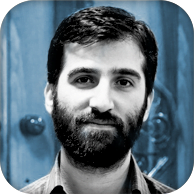Persian Islamic Geometric course
5-day full course (6-hour workshop for every day, including brief breaks)
- April 26th – May 1st, 2019
1. Introduction
Islamic Geometric patterns have been one of the most used art in Islamic everyday life throughout centuries. This art has evolved depending on time and different cultures. countries like Iran, Turkey, Morocco, Syria, and Egypt have shaped their own unique patterns that can be distinguished from one another.
Having in mind that throughout history countries were joint and then separated many times from each other, different dynasties shaped their own method for geometric patterns. In Iran as one of the most influential countries in art especially Islamic art people used art in their daily life so the geometric patterns can be found all over this beautiful country.
Drawing some of these patterns with today’s technology is really hard but understanding the concepts on how these patterns were created with basic tools such as a ruler, ordinary compass and pencils will take you to a journey through history in which you will enjoy the art of Islamic geometric patterns as they used to be centuries ago.
This course will give you the opportunity to learn, understand and draw different Islamic geometric patterns with a traditional approach and study its impact in Islamic culture.
2. Course outline
With a focus on the geometric patterns in Shiraz, this course aims to study historical architectures, mosques, baths and other structures that have beautiful geometric patterns, in order to study and learn the geometric patterns used in these buildings.
This course would be suitable for architects, Illumination (Tazhib) artists, traditional Restoration workers and designers and other artists that are interested in traditional and Islamic art.
3. What you will learn
- Theoretical bases of geometric patterns and its usage in Islamic art and architecture
- Basic concepts of geometry (dividing lines and angles, drawing simple shapes such as square and pentagons and etc.)
- Different proportions in Islamic art and geometry
- Regulation and geometry in nature
- Learn how to draw 30 geometric patterns used in different structures in Shiraz
4. Teaching Method
The learning would be a case study from actual real patterns that you will find in Shiraz and the Teaching method will be in the traditional ways with the help of modern equipment such as using the PowerPoint to show the steps on how a pattern is drawn and showing animated and digital drawings for the students to understand different stages of each work.
If be needed other tools will be used to make the learning easier and more fun, tools like Islamic geometric puzzles made by Mr. Shakouri are a great way to enjoy, learn and make different patterns.
All the above methods are accompanied by the instructions and supervision of Mr. Shakouri
5. What tool you will be provided with
What students will have:
- 1. Pencil
- 2. Compass
- 3. Ruler
- 4. Some color pencil or pastille for coloring
Tools used in class:
- 1. Video projector
- 2. Proper table
- 3. Proper class with proper light
- 4. Geometric puzzle
6. About the lecturer
Saeid Shakouri has a bachelor in Architecture and Master in Landscape Architecture, has more than 10 years’ experience designing Islamic structure, speaking in international exhibitions and holding workshops on Islamic geometric patterns. His specialty is Islamic geometric patterns and he knows how to draw thousands of different Islamic geometric patterns and he has invented some very beautiful ones himself too.
7. Daily plan of Course
| Date | topic | topic | Extracurricular |
| 2019.26.4 |
|
Pickup to the hotel | |
| 2019.26.4 | Opening / artistic visit |
The first workshop on geometric patterns/ artistic visit |
Vakil complex, Khan school, Arg of Karim Khan |
| 2019.27.4 | Artistic visit | Second workshop on geometric patterns |
Shah Cheragh holy shrine, Atigh mosque |
| 2019.28.4 | Artistic visit | Third workshop on geometric patterns |
Nasir-ol-molk Mosque |
| 2019.29.4 | Artistic visit | Fourth workshop on geometric patterns |
Tomb of Hafez and Saadi, Qur’an Gate, Delgosha Garden |
| 2019.30.4 | Artistic visit, Fifth workshop on geometric patterns | Closing |
Eram Garden, Zinat Al-Moluk House, Qavam House |
| 2019.1.5 | A visit to ancient historical city of Persepolis |
Persepolis, Naqsh-e Rustam, Naqsh-e Rajab |
8. Course Fees
- 670 euro
- Please be informed a prepayment of 100Euro is required after your application has been approved.
9. Required Documents (Electronic copies required)
- Resume: A list of your current academic position, educational achievements, and professional activities. Provide details regarding the previous curriculum and/or staff development experiences.
- A completed form of ISOA Short term course. Click here to download the form.
10. Registration
Applications must include all required documents and be submitted no later than March 1st, 2019, to the Islamic School Of Art ( ISOA), The Course of Persian-Islamic geometric patterns. Incomplete applications will not be considered.
For further information please contact International communication coordinator
Or Sattar Soltanpour (course director)
- s.soltanpour@isoa.ir






